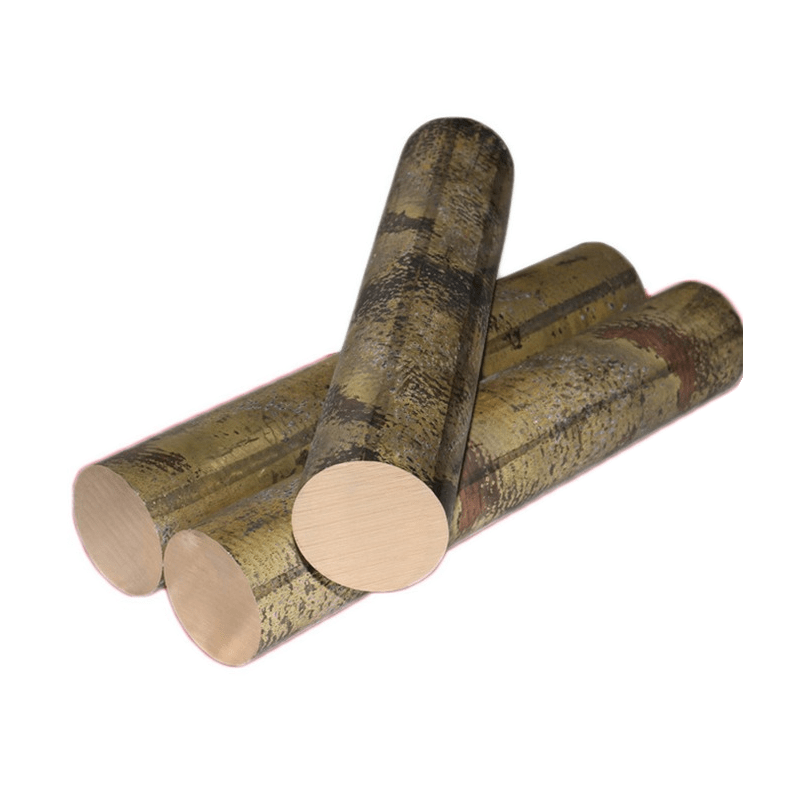
Вот подробное сравнение между медными сплавами UNS C62300 и UNS C62400, структурированными в разделах и таблицах для удобства понимания. Этот сравнительный анализ включает в себя важные свойства, показатели эффективности, отраслевые приложения, методы обработки и многое другое.
Сравнение медных сплавов UNS C62300 и UNS C62400
Введение
UNS C62300 и UNS C62400 оба алюминиевые бронзовые сплавы, известные своими превосходными механическими и коррозионными устойчивыми свойствами. Они находят приложения в различных отраслях, особенно в морских, насосных и компонентах клапана. Несмотря на их сходство, они демонстрируют четкие различия в композиции, производительности и приложениях, которые необходимы для понимания инженеров и ученых -материалов.
Химический состав
Химический состав этих сплавов значительно влияет на их механические свойства и характеристики производительности. Ниже приводится сравнение их элементарного содержания:
| Элемент | C62300 (% содержание) | C62400 (% содержание) |
|---|---|---|
| Медь | 82,2 - 89,5 | 82,8 - 88,0 |
| Алюминий (Al) | 8.5 - 11.0 | 10,0 – 11,5 |
| Железо (Fe) | 2,0 – 4,0 | 2,0 – 4,5 |
| Марганец (Mn) | ≤ 0,6 | ≤ 0,3 |
| Кремний (Si) | ≤ 0,25 | ≤ 0,25 |
| Олово (Sn) | ≤ 0,5 | ≤ 0,2 |
| Другой | ≤ 0,5 | ≤ 0,5 |
Механические свойства
Механические свойства, включая прочность, твердость и пластичность, определяют пригодность этих сплавов для конкретных применений. Вот подробный взгляд на их свойства:
| Характеристики | C62300 | C62400 |
|---|---|---|
| Твердость (по Роквеллу Б) | 89 | 92 |
| Предел прочности | 605 МПа | 655 МПа |
| Предел текучести | 305 МПа | 330 МПа |
| Относительное удлинение при разрыве | 15% | 14% |
| Модуль упругости | 117 ГПа | 117 ГПа |
| Коэффициент Пуассона | 0.34 | 0.34 |
| Шарпи Импакт | 25,0 - 40,0 j | 15,0 Дж |
| Изод воздействие | 43,0 - 47,0 j | 23.0 j |
| Предел выносливости | 200 МПа | 235 МПа |
| Обрабатываемость | 50 | 50 |
| Модуль сдвига | 44 GPA | 44 GPA |
Производительность при различных температурах
Производительность при повышенных и различных температурах имеет решающее значение для применений в суровых условиях. Ниже сравнение того, как каждый сплав работает термически:
| Имущество | C62300 | C62400 |
|---|---|---|
| Температура плавления | 1041 ° C (1905 ° F) | 1027 ° C (1880 ° F) |
| Коэффициент теплового расширения | 16,2 мкм/м ° C (9,00 мкм/в ° F) | 16,5 мкм/м ° C (9,17 мкм/в ° F) |
| Формование и изгиб | 54,4 Вт/мк (378 БТУ в/ч. Форт² ° F) | 58,6 Вт/Мк (407 БТУ в/ч. Форт² ° F) |
Промышленные приложения
Из -за их благоприятных свойств, оба сплава используются в ряде приложений, особенно в сложных условиях:
| заявка | C62300 | C62400 |
|---|---|---|
| Компоненты клапана | Да | Да |
| Насосные компоненты | Ограничено | Да |
| Морское оборудование | Да | Да |
| Высокие крепежи | Да | Да |
| Оборудование для полюсной линии | Да | Да |
Форма и размер
Доступность этих сплавов в различных формах и размерах делает их универсальными для различных производственных процессов:
| Атрибут | C62300 | C62400 |
|---|---|---|
| Доступные формы | Стержни, Бары | Стержни, Бары |
| Стандартные размеры | Различный | Различный |
| Общие формы | Лист, Плита | Лист, Плита |
Производственные стандарты
Оба сплава придерживаются различных национальных и международных стандартов для обеспечения качества:
| Стандарт | C62300 | C62400 |
|---|---|---|
| АСТМА | B124, B150 | Б150 |
| КАК Я | SB150 | SB150 |
| SAE | Дж461, Дж463 | Дж461, Дж463 |
Сварка и обработка
Способность сварки и формировать эти сплавы необходима для их применения в производстве:
| Метод обработки | C62300 | C62400 |
|---|---|---|
| Совместимость со сваркой | Газовый экранированный, пятна, пайнг, приклад | Газовый экранированный, пятна, пайнг, приклад |
| Предпочтительный метод сварки | Нет пайки или оксиацетилена сварки | Нет пайки или оксиацетилена сварки |
| Коделка температурного диапазона | 705 до 872 ° C (от 1300 до 1600 ° F) | От 760 до 885 ° C (от 1400 до 1625 ° F) |
| Горячая работа | Хорошая вместимость | Хорошая вместимость |
| Холодная обработка | Хорошая вместимость | Плохая способность |
| Диапазон температуры отжига | 594 до 649 ° C (от 1100 до 1200 ° F) | 594 до 650 ° C (от 1100 до 1200 ° F) |
Преимущества и недостатки
Понимание преимуществ и ограничений этих сплавов жизненно важно для выбора материала:
| Атрибут | C62300 | C62400 |
|---|---|---|
| Преимущества | Хорошая прочность, устойчивость к коррозии | Высокая прочность, подходящая для термообработки |
| Недостатки | Умеренная холодная работоспособность | Плохая холодная работоспособность |
Похожие продукты
Эти сплавы разделяют свойства с другими сплавами на основе меди, предлагая альтернативы, основанные на конкретных потребностях:
| Похожие продукты | Характеристики |
|---|---|
| Алюминиевые бронзовые сплавы | Высокая коррозионная стойкость и прочность, сравнимые с C62300 и C62400. |
| Медно-никелевые сплавы | Отличная коррозионная стойкость для морских применений. |
Простое сравнение аналогичных продуктов
| Продукт | Устойчивость к коррозии | Сила | Приложения |
|---|---|---|---|
| США C62300 | Высокий | Умеренный | Морские, клапаны, насосы |
| США C62400 | Выше | Высокий | Насосы, высокопрочные крепежные элементы |
| Медно-никелевые сплавы | Очень высоко | Умеренный | Морская пехотинца, сантехника |
Вывод
Таким образом, как сплавы, так и сплавы UNS C62300 и UNS C62400 представляют ценные варианты для отраслей, требующих высокой прочности и коррозионной стойкости. Их отдельные свойства и композиции обслуживают различные применения, от морского оборудования до промышленных компонентов. Выбор соответствующего сплава зависит от конкретных требований, таких как тепловые характеристики, механическая прочность и процессы изготовления. Понимание этих нюансов позволит инженерам и производителям принимать обоснованные решения для своих проектов. Если у вас есть какие -либо дополнительные вопросы или вам нужна более конкретная информация, не стесняйтесь спрашивать!
